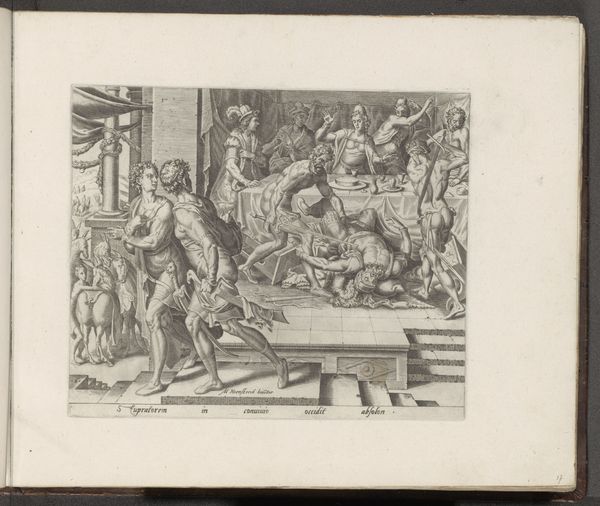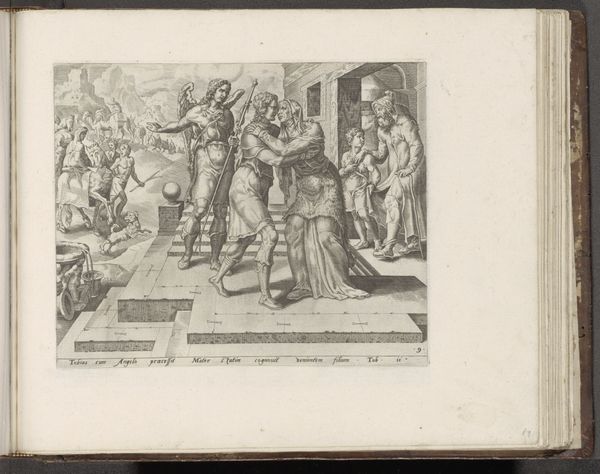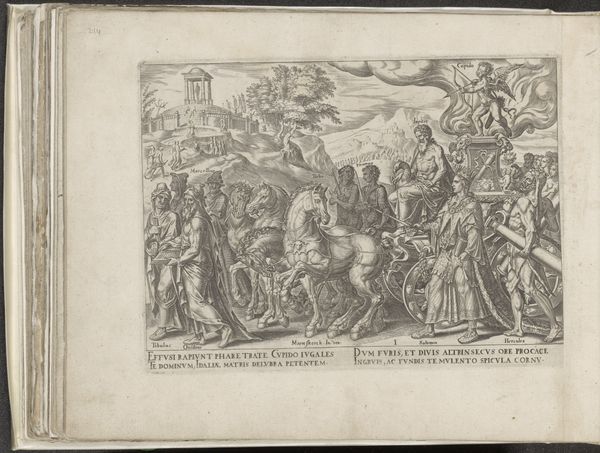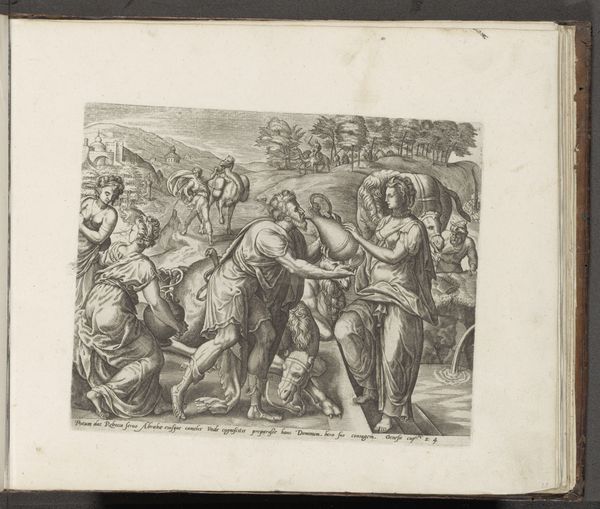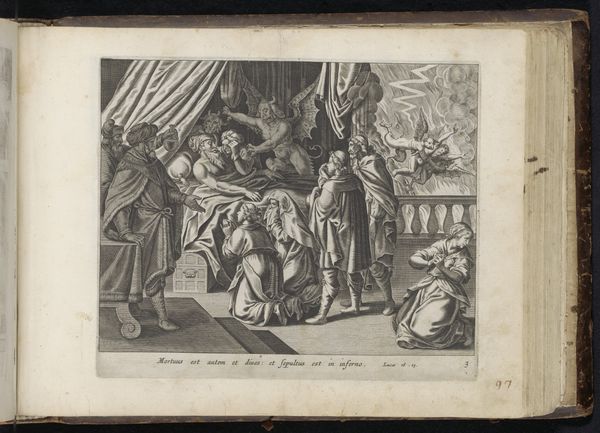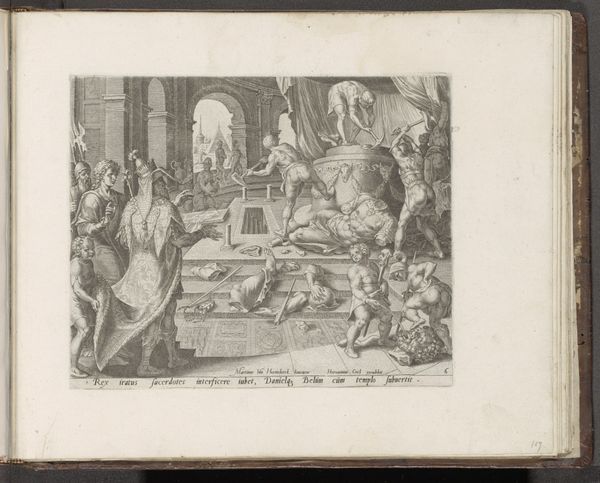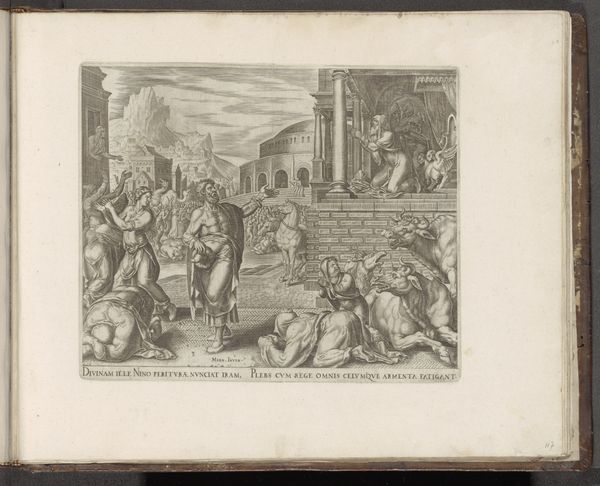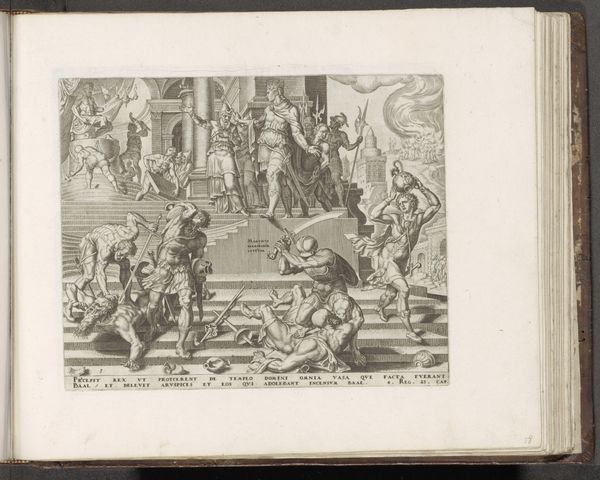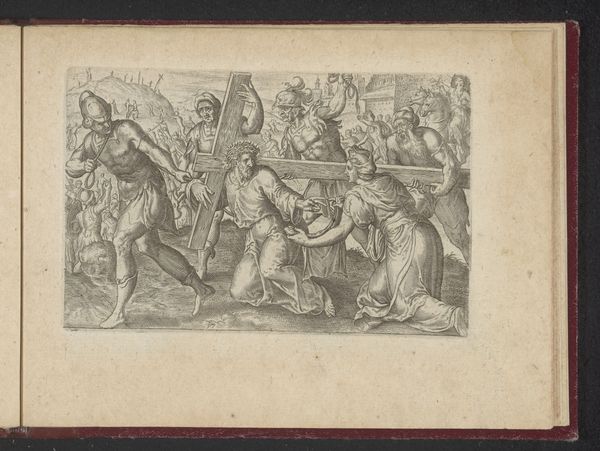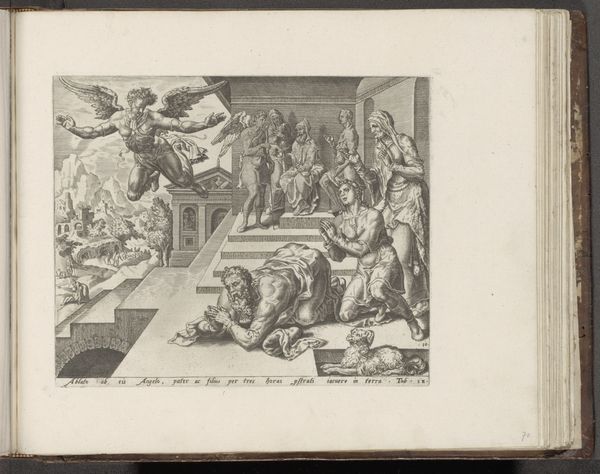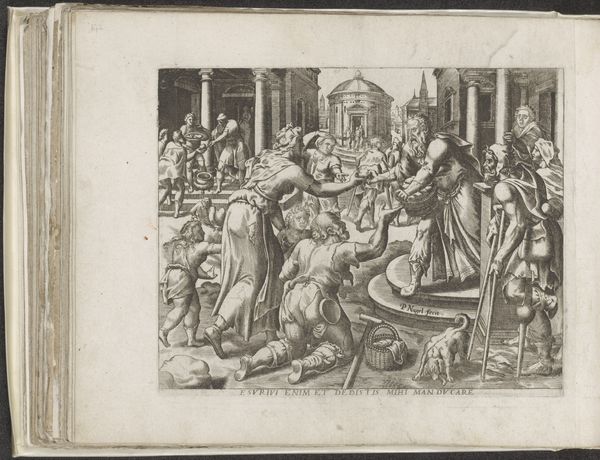
print, engraving
#
narrative-art
# print
#
figuration
#
history-painting
#
northern-renaissance
#
engraving
Dimensions: height 203 mm, width 265 mm
Copyright: Rijks Museum: Open Domain
This print, Holofernes before Nebuchadnezzar, was made by Jan Snellinck around the late 16th or early 17th century. It’s an etching, meaning that the image was created by drawing into a wax ground on a metal plate, and then using acid to bite the lines. The fine lines of the etching beautifully capture the dynamic scene, full of figures presenting war spoils to a seated king. The original drawing may have been done by another artist, with Snellinck acting as a skilled translator of design into print. This division of labor speaks to the increasingly specialized nature of art production at this time, especially for distribution to a growing market. Consider the amount of labor involved: from mining the metal, to preparing the plate, to pulling the prints, each requiring skill and time. Prints like these were crucial in disseminating ideas and stories, making them vital tools for cultural exchange and the projection of power. Appreciating this work means understanding the complex interplay of materials, processes, and social context, blurring the lines between art, craft, and industry.
Comments
No comments
Be the first to comment and join the conversation on the ultimate creative platform.

